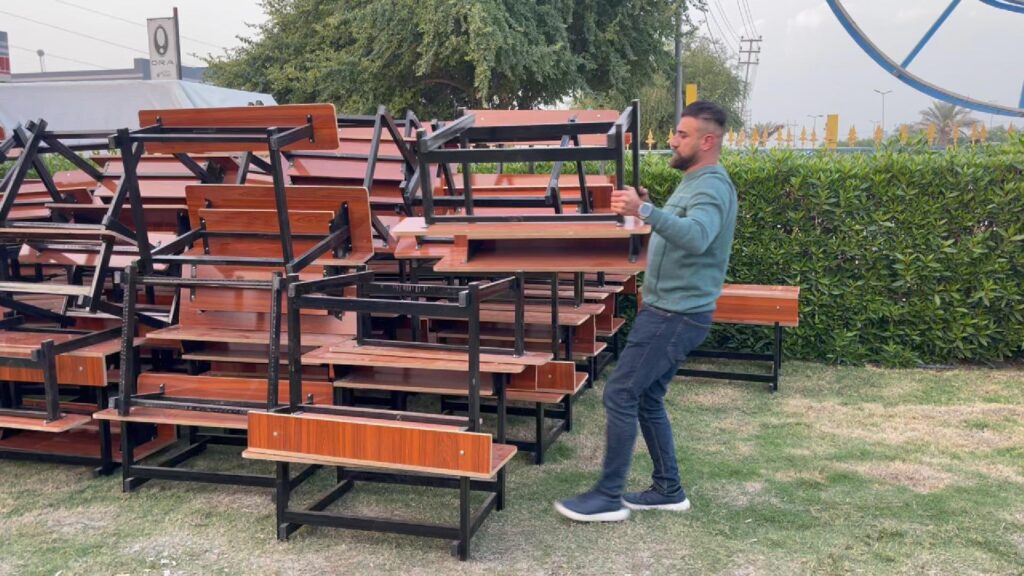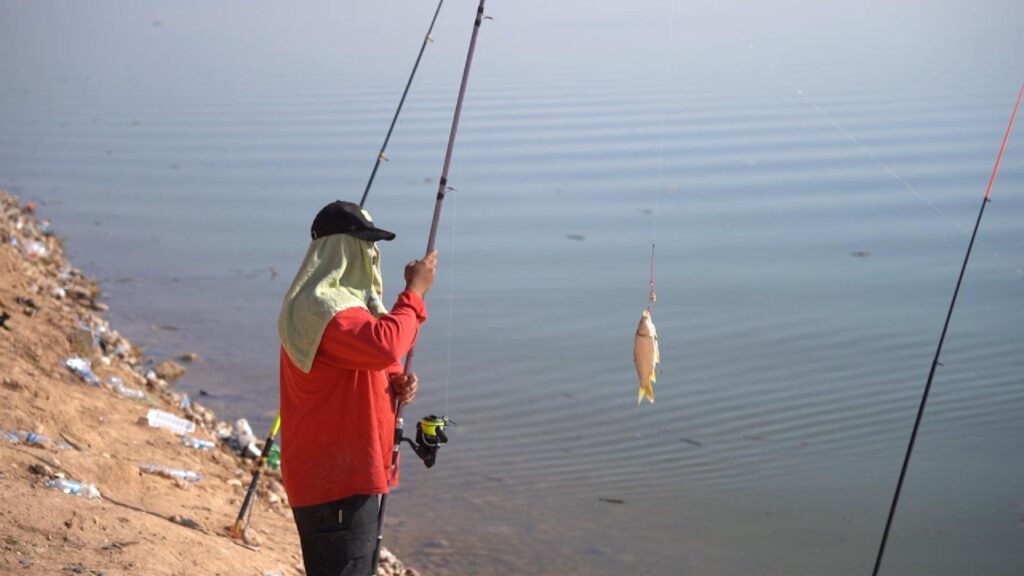Iraq in the World Dis(Order)

On April 9, 2003 — 20 years ago sharp — Baghdad fell. Arabs, Persians, Mongols, Turks, Ottomans, Safavids, British and Americans had history of fighting over this place. Baghdad has seen the sunsets of some world orders and the dawns of others. In this regard, the most remarkable historical date was probably 1258, when the Mongols captured Baghdad at the peak of their historical power. Their empire was still fresh, ready to fight on, and it grabbed the world’s economic center of the time. But the peak was followed by stagnation and decline. The next time history recurred in 1534, when Baghdad came under the Ottoman rule—also at the height of its power under Suleiman the Magnificent. And here comes 2003… Perhaps, history is the queen of all sciences after all?
The war in Iraq (or the Third Gulf War) was unleashed in 2003 by the international coalition forces led by the United States, which numbered about 250 thousand troops. This led to the overthrow of President Saddam Hussein. Along with him, the Iraqi branch of the Arab Socialist Renaissance Party (ASRP/Ba’ath) lost its influence. There was little honor in the war per se. The Iraqi army often surrendered without a fight and eventually capitulated. Regionally and ideologically, the era was definitely passing away—Arab socialism and nationalism were giving way to increased religiosity and chaos. Baghdad no longer gives instructions to the Shiite center of Najaf, and it’s also a big question of who is more important now.
Chaos is not only the result of external interference. Hussein himself led the country to this outcome through his foreign policy, showing contempt for his neighbors, waging wars with them, and engaging in brinkmanship with world powers. Speaking of domestic politics, we believe that Saddam might have liked the sentiment of Petyr ‘Littlefinger’ Baelish from Game of Thrones: “Chaos isn’t a pit. Chaos is a ladder. Many who try to climb it fail and never get to try again. The fall breaks them. And some, are given a chance to climb. They refuse, they cling to the realm or the gods or love. Illusions. Only the ladder is real. The climb is all there is.”
Iraq today
Twenty years after the American invasion, Gallup International cites the results of its sociological survey, according to which 60% of Iraqis believe that life was better under Saddam Hussein than it is now. Former Iraqi Minister of Energy Luay al-Khatteeb in his Twitter (the company is owned by Meta, whose activities are recognized as extremist and are banned in Russia) has already called for the need to check the calculation methods offered by Gallup International. Because the media spread a populist headline, actually suggesting that Iraqis were better off under a dictatorship, Al-Khatteeb concluded that Gallup International had a negative impact upon the situation in the country. In his opinion, during Saddam’s reign, “the ruler’s hobby was executions, tortures, mass graves, electricity for two hours a day, while free speech was punished with quiet execution…”.
There is, however, another indicator. Whereas in 2003, two out of three Iraqis rated the general state of affairs in the country as bad, in 2023 only one out of three did. Indeed, Baghdad is a little more stable now than it had been over the years. But Iraqis as a nation are certainly divided. In Iraq, many say today that they were against Hussein’s dictatorship and rejoiced when he was overthrown; but they ended up falling under the dictatorship of the American occupiers and Iranian proxies; and now they have to fight against them. But the U.S. military in Iraq is no longer 170 thou troops stationed there back in 2007, but only about 2,500 troops (the real number could be higher due to the employees of PMCs and intelligence services).
Rescuing the Iraqi culture
There is no doubt that the bloody events of 2003 and the 20 years of decline that followed are the greatest tragedy of the Iraqi people. However, we should not forget that Baghdadis have experienced dark times more than once in their history. The events of 2003 are often compared to the conquest of Baghdad by the Mongols in 1258. Ibn Battuta once wrote: “…there is nothing good in it that stops the eye and calls to him who is tempted to look, except the Tigris, which lies between its east and west, like a mirror wrapped between two pages.” Another quite significant event for modern Iraq is the revolution of 1958, when the pro-British monarchy was overthrown and the officers seized power.
This year “Iraq at the Beginning of the 21st Century: Toward a New Statehood” is being prepared for publication. In the introduction the author who is also the author of this article has this to say: “In honor of the Iraqi revolution of 1958 in the central square of Baghdad named Tahrir (Liberation) Nasb al-Hurria (Monument of Freedom) was raised. The majestic composition created by Iraqi sculptor Jawad Saleem became a symbol of the Iraqi nation’s freedom fervor, its plot being based on the historical development of the Iraqi people from ancient times to the present. It is this structure that protesters in Baghdad have returned to time and again, as if seeking the support of Iraqi history itself to break the vicious circle of disasters.”
But Javad Saleem, who wrote his name in history, was not alone. He had died before the Liberation Monument was completed. His friend and assistant Mohammed Ghani Hikmat who today is known as “The Sheikh of Sculptors in Iraq” went through with this project in those years. The nation saw many dramatic events while the Iraqi culture faced serious challenges: after 2003, the museums were in ruins and looted. But the Iraqis did not give up. Mr. Hikmat established a commission, attracting his own funds and raising funds from various donors to restore, search and recover cultural treasures.
Half a century after the Monument of Freedom had been completed, the mayor of Baghdad asked Hikmat to continue his work on the monuments of the capital city. The project comprised four new monuments to be placed in different parts of the city. One of them, the Nasb Inkaz as-Sakafa al-Iraqiyya (Monument to the Salvation of Iraqi Culture), became the new soul of the Iraqi capital. Unfortunately, the history repeated again, and it was not M.G. Hikmat, who died in September 2011, but his son and student Yasser Hikmat who finished the project. The sculpture shows a broken Sumerian cylindrical seal, symbolizing the decline of culture; but it is supported by the multi-armed torso of a citizen. The cuneiform inscription reads, “here the writing began.”
Whatever happened to Baghdad, it has always been reborn—through human efforts, to be sure.
Ramifications of Hussein’s foreign policy
Saddam Hussein’s foreign policy could be described as adventurous. Unlike his predecessor, Ahmad Hassan al-Bakr, he was less careful in making decisions (or delaying the decision-making, which, of course, is also a Middle East game). A chain of events, estimated in Saddam Hussein’s own way early in his reign, led first to Iraq’s war with Iran (1980–1988), the most brutal one since World War II, killing nearly a million Iraqis and Iranians. Then, it invaded Kuwait (1990–1991), which also resulted in a very negative fallout. The UN stood up against Iraq and massive sanctions were imposed, supported by the U.S. and the USSR. The U.S. sent its troops to liberate Kuwait, defeated Saddam’s army, and Iraq paid compensation to Kuwait even after the overthrow of the dictator.
Despite the comprehensive nature of sanctions against Iraq in the 1990s, the Iraqi government managed to maneuver, while the elite was successful in maintaining their positions. For a decade, the regime of Saddam negated the impact of sanctions, kept the state apparatus alive, and even conducted trade, including smuggling operations, with other countries. The erosion of the sanction regime received a major boost with the oil-for-food program in 1996. The Iraqi authorities then found other loopholes that allowed them to sell oil and earn income from its sale. By 2002, changes in the regional recognition of Iraq were brewing, the authorities felt more confident than in the early 1990s. The U.S. and the coalition forces invaded the country in 2003, having overthrown the Saddam’s regime. The post-conflict situation and the foreign occupation, under which Iraq found itself under the new government, required new approaches. The lifting of sanctions was caused by the need to stabilize the new regime friendly to the foreign occupiers after the overthrow of Saddam Hussein, and was also instrumental in the enrichment of certain lobbying groups in the United States associated with this military policy [1].
Hostilities along with a guerrilla movement and terrorist attacks became commonplace in Iraq after 2003. The new authorities were derided by the population as “traitors of their homeland,” close to the occupiers. Moreover, when it comes to the ethnic and religious strata, during the years that followed the invasion the Americans had to cope with the resistance of both the Sunni and Shia population. The overthrow of Saddam Hussein who came from a Sunni background resulted in marginalization of this part of Iraqi population by the Shiite political forces that came to power and were supported by the US. De-Baathification dealt a blow on the Sunnis; most notorious fighting and terrorist attacks took place in their pale of settlement. The term “Sunni Triangle” (or “Triangle of Death,” as it was called by American soldiers and journalists), a Sunni settlement zone in the northwest of the country, became widespread and viral. The Americans themselves acknowledged their “mistakes” there.
Interestingly enough, the Americans instituted a body that was responsible for independent oversight, auditing and inspection of US-funded reconstruction programs in Iraq – the Special Inspector General for Iraq Reconstruction (SIGIR). According to his report, until 2013, the Americans had spent more than USD 60 billion with a nebulous outlook in the context of the Iraq reconstruction (which had already plunged into a new round of war in 2014). The report only confirmed the inefficient spending of U.S. taxpayer funds from Iraqi reconstruction perspectives, the existence of numerous corruption schemes, abuse, fraud, and embezzlement. The U.S.-backed legal system allowed ethno-sectarian parties to protect corrupt officials from accountability at all levels.
Iraq under regional transformation
Going back to the 2003 decision, the following can be recalled. American academic scholars in the field of international relations wrote for the New York Times in 2002: “Military force should be used only when it advances U.S. national interests. The war on Iraq does not meet this standard.” Thus, academic experts in international relations shared the views that differed from those of the general public, and in the case of Iraq, the views of academics were not covered by mainstream media or taken into account by U.S. foreign policy-makers. One of the key lessons that academics thought about but practitioners came to much later is that one must be prepared for the post-war period, in addition to making every effort in the process of invasion to evade fighting insurgents supported by the population.
The region has gone through three stages of transformation. The first phase is the influence and dominance of external power represented by the United States. In 2003, the U.S. invasion of Iraq seemed to mark the peak of American power in the region and across the world. U.S. action destabilized not just Iraq, but also West Asia as a whole. Baghdad played a major role in the regional security system and influenced many neighboring states, as it possessed significant resources, primarily oil and gas. The U.S. “encircled” Iran with its invasions of Iraq and (in 2001) Afghanistan, which further triggered the chain reaction. Iran moved into Iraq, increasing its influence there, which led to growing resistance not only from Israel, but also from the Gulf states—Saudi Arabia, in the first place.
The second phase began with what is often referred to as the “Arab Spring” in 2011. Events that broke out in Tunisia spread to other states in the Middle East. All this led to the overthrow of governments, wars and destabilization of security regimes in the region. Iraq did not experience the conditions of the Arab Spring typical of other Arab states. The country approached 2011 with numerous political parties and movements; Prime Minister Nouri al-Maliki had been in power for only five years (unlike the leaders of other Arab countries who had been in office for decades) and struggled to get a second term, almost losing his seat to a rival; and U.S. troops decided to withdraw from the country. Yet the latter weakened Iraq’s security forces, and al-Maliki became associated with Saddam Hussein during his second term as prime minister in terms of the tough decisions he made against his political opponents. Competition between Saudi Arabia and Iran kept stiffening, and the war in Syria was escalating. This situation was the perfect storm for shaping the environment in which Iraq entered into a devastating war with the ISIS terrorists (an organization recognized as terrorist and its activities banned in the Russian Federation).
The third phase can be described as the period of relative stabilization of West Asia after the end of the Arab Spring. It is characterized by a decline in U.S. influence and a stronger posture of regional states. Regional dynamics began to change due to the activities of a new generation of leaders in the Gulf states, the growing role of China and the transformation of the world order as a whole. If tensions between Iran and Saudi Arabia were to go into remission, this could serve to shape a new special system of regional security and have a positive impact on Iraq that had gone through the war with ISIS, as well as through the U.S.-Iran confrontation. This, as well as high oil prices, has stabilized the state and its security forces.
Like the whole of West Asia, Iraq had been searching for its own development path for many years. In the medium term, it will remain a destabilizing factor for neighboring states. But the level of problems that followed the American invasion, including the spread of ISIS in 2014, is no longer foreseeable. First of all, this is due to the fact that regional states have learned to cope with such challenges. Thanks to the experience gained by the West Asian states, the impact of the events taking place in Iraq will unlikely be so tangible and will not take a heavy toll on the regional security system. Iraq continues to be internally divided, corrupt and struggling for resources, and yet the current situation can be paradoxically described as stabilized.
1. Mamedov R.S. Implications of the UN and U.S. lifting their sanctions on Iraq after 2003. Humanities. Herald of the University of Finance. 2022;12(5):164-170.
From our partner RIAC
Share this:
Related






